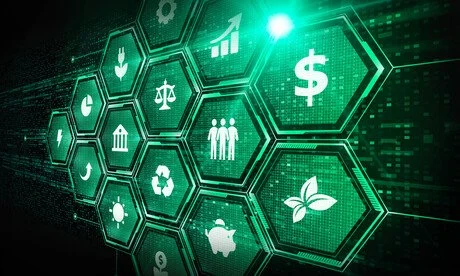AI and the Australian IT Leader: The Imperative for Sustainable Innovation
Artificial intelligence (AI) is rapidly emerging as one of the defining forces of the decade, standing alongside the urgent global challenge of climate change. With worldwide AI investment forecast to exceed US$600 billion by 2028, AI's massive appetite for computational power creates a significant environmental footprint that Australian IT leaders can no longer ignore.
The acceleration of AI workloads is straining resources globally and locally: Energy and Emissions, Water Consumption and E-Waste.
For Australian organisations, sustainable AI adoption is a critical strategic imperative. The goal is to pursue innovation through sustainability, ensuring that our digital evolution supports, rather than undermines, our climate commitments.
The Energy Shift: Trends, Skills, and Regulatory Trends for Digital Sustainability in 2026
Amid the 2025–26 shift, digital sustainability hinges on energy-aware IT leadership. The Energy Shift ties surging data centre demand to AI-driven compute power, reclassifying energy as a core resource. Leaders must master New Business Infrastructure—understanding data centres’ role, energy-digital growth, and decarbonisation costs. Regulations push System-Level Accountability, provenance, and Scope 3 emissions reporting, demanding robust provenance and traceability. For Australia’s 1 million IT workers, the horizon blends AI-driven efficiency with workforce redesign, AI fluency, data literacy, and cyber resilience. The 2026 horizon urges proactive governance of energy, data sovereignty, and ethical, transparent, scalable compliance.
GreenOps in Action: How IT Teams Can Drive Sustainability and Save Costs Now
Sustainable IT is a non-negotiable constraint shaping every IT decision. IT leaders, cloud practitioners, and sustainability champions can drive real, measurable progress with a GreenOps focus that spans the entire technology portfolio—from data centres to devices and SaaS.
Unlocking Measurable Impact: Why the Sustainability Value Triangle is Essential for Digital Sustainability
Is your organisation unlocking genuine value from its sustainability efforts, especially in the digital realm?
New research shows that moving beyond ambition to measurable impact requires deep integration across the Sustainability Value Triangle: Finance, IT, and Sustainability.
Advanced Integrators consistently achieve higher sales growth, stronger business cases, and better access to quality data.
Crucially, the IT function is pivotal, tasked with providing the automated systems necessary for reliable data collection and justification of investment.
Learn how to bridge the gap between commitment and operational reality and drive tangible commercial success.
Transforming Tomorrow: Why Sustainable IT Standards Must Drive Your Business Transformation
Sustainable IT is a strategic necessity for Australian businesses undergoing transformation. CIOs/CTOs lead with structured, measurable approaches using tailored Sustainable IT standards to embed ESG performance across the organisation. Sustainable IT helps guide enterprise technology to minimise harm and maximise positive ESG impact, addressing environmental footprints, social impact, and governance. Highlighting benefits in financial value, reputation, and future readiness. It introduces nearly 200 IT-specific ESG standards covering environmental, social, and governance goals, and offers practical starting points: focus on material, high-impact areas and establish vision, accountability, and baselining energy use.
Webinar: Digital Sustainability; The What, Why & How
The recent Technology Executive Roundtable on Digital Sustainability provided an essential strategic overview for executives.
The session established digital sustainability as a critical business imperative, driven by regulatory requirements, investor pressure, employee values, and the need for efficiency. With 5 billion people connected and constantly interacting, digital consumption represents an estimated 40% of an individual's carbon budget when aligned with Paris 1.5°C targets. Organisations must urgently shift from reactive compliance to proactive sustainability strategies that deliver both environmental impact and business value.
Climate Crossroads: How a Warming Australia Puts Our Digital Future at Risk
As Australia’s economy continues to ride the tidal wave of digital transformation, our technology sector stands as a national beacon of innovation and growth. Yet this digital future sits at a climate crossroads. The latest National Climate Risk Assessment makes clear that the very backbone of our digital economy—telecoms, energy, data centres, and critical supply chains—faces escalating threats from heat, bushfires, floods, and extreme weather. These hazards don’t just threaten infrastructure; they ripple through productivity, insurance costs, R&D investment, and the skilled workforce that powers tech advancement.
In this moment, tech professionals have a pivotal role to play.
Making Green a Core Metric: Why Sustainability is Your Tech Team’s Next KPI
The 2024 GreenOps Survey by ClimateAction.Tech reveals a pivotal shift in Enterprise IT: sustainability, as a KPI, is now more effective than cost-saving metrics for achieving financial savings. The survey, based on 2,680 global responses, aimed to determine if environmental concerns like carbon reduction are taking precedence over traditional cost targets in IT.
Key findings indicate a strong preference for sustainability: 1) Sustainability Over Cost, 2) Personal Commitment, 3) Leadership Support, 4) Measuring Impact.
BIG TECH Navigating the Sector’s Climate Imperative: A Call for Transparency and Strategic Disclosure
The technology sector is facing a "climate strategy crisis" as rapid growth in areas like AI leads to soaring energy demands, undermining existing climate pledges. Many tech companies' greenhouse gas (GHG) emission targets are losing meaning due to this unconstrained energy consumption, particularly from data centres and hardware production, coupled with outdated market-based accounting methodologies that can obscure actual emissions.
Essential Questions for Boards: Preparing Your IT Team for Climate Reporting
As the deadline for mandatory climate reporting passes, organisations must ask: Is our enterprise technology team prepared to meet the challenges ahead?
From January 2025, the first of 6,000 Australian businesses will begin preparations for this significant uplift and and will impact many more as sustainability becomes a focal point in corporate procurement processes.
The AI Hype: Navigating the Resource Demands of a Digital Future
This article examines the resource implications of the AI-driven digital expansion, emphasising the unprecedented demand AI and data centres place on power and water. It argues that the rapid deployment of AI-enabled services and the construction of data centres threaten energy systems and water resources, with notable concerns in Australia, the UK, and globally.
Key Insights from the Climate Governance Forum 2025: Navigating the Climate Imperative
An insightful day at Australia's largest climate event for directors - bringing together leaders, experts, policymakers and investors to strengthen governance capabilities, better understand climate risks and unlock strategic value from the net zero transition.
IT Sustainability Maturity Assessment
IT sustainability maturity benchmark program.
Assess your current state in 11 pivotal characteristics and capabilities for driving and partnering on enterprise sustainability. Benchmark your organisation using standardised KPIs and compare results internally and against others in your industry.
Understanding a Business's ICT Carbon Emissions Profile
Digital sustainability involves a conscientious and responsible approach to technology usage that fosters workload efficiency and leads to sustainable outcomes for our planet.
From Talk to Action: Digital Carbon Footprint - From Greenwash to Accountability
How do we measure, report, and reduce the environmental impact of cloud computing, data centres, and digital applications? This session as part of CAWSYD’25 cut through greenwashing to explore practical strategies for businesses to track and manage their digital emissions with integrity.
PODCAST : How AI and Digital are changing the Sustainability Landscape
The technological revolution transforming Australian businesses carries a hidden environmental cost that few sustainability practitioners fully understand. In this revealing conversation with digital sustainability expert Tim Prosser, we uncover the substantial climate impact of our digital lives and explore how organisations can address this overlooked aspect of their sustainability strategy.














